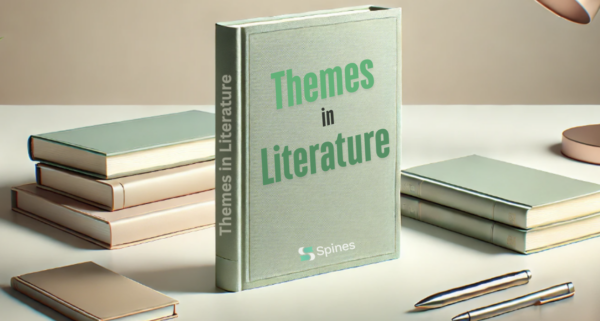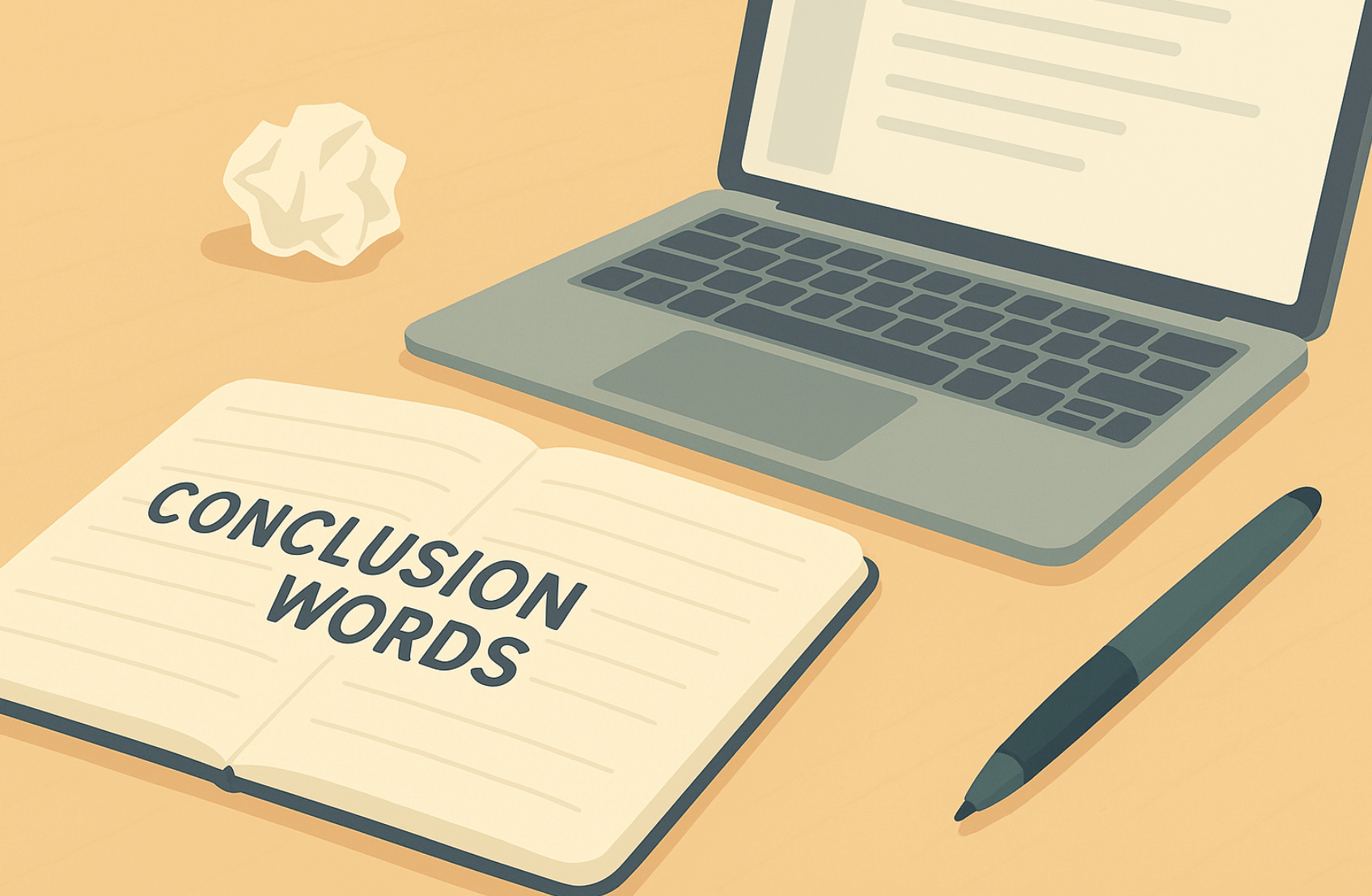So, you’ve written your masterpiece – now it’s time to sell it with a killer synopsis. Welcome to the often dreaded, sometimes misunderstood, but absolutely essential art of synopsis writing. Think of your synopsis as the glittering invitation to your novel’s grand debut. It’s the first thing agents, publishers, or readers will see, and let’s face it, if it’s not impressive, your novel might never make it to the spotlight.
In the publishing world, a synopsis is your chance to present your story in a compact, compelling way that hooks the reader while giving them a taste of what’s inside. It’s not just about summarizing your plot; it’s about showcasing your book’s essence and enticing your audience to read more. Whether you’re pitching to agents or just need clarity on your own story, a strong synopsis can make all the difference.
This article is going to guide you through the process of crafting a standout synopsis. We’ll share inspiring novel synopsis examples, tips to avoid common pitfalls, and techniques to make your synopsis as captivating as your novel. Ready to turn your book’s story into a pitch-perfect snapshot?
What is a Novel Synopsis? (And Why It’s More Than Just a Summary)
A novel synopsis is like your book’s résumé – brief, informative, and designed to make someone want to hire you (or, in this case, read you). It’s not just a dry summary of what happens in your story. Nope, it’s much more strategic than that. A strong synopsis captures the essence of your novel, highlighting the most important elements: who the main characters are, what challenges they face, and what’s at stake. All wrapped up in a few concise paragraphs. Think of it as a high-energy trailer for your book, minus the dramatic background music.
Now, let’s be honest. If you’re anything like most writers, writing a synopsis probably ranks somewhere between a root canal and drafting your tax returns. It feels like the literary equivalent of a bad first date – you’re nervous, you’re trying to sell yourself, and you can’t quite figure out how to make the best impression without overselling. But here’s the thing: a killer synopsis isn’t just a formality. It’s a powerful marketing tool, a persuasive pitch that can win you fans (or a book deal) before they even read a page of your book. It’s your chance to entice, engage, and leave them wanting more.
Key Elements of a Killer Synopsis (Without Spoiling the Plot)
Writing a killer synopsis isn’t just about summarizing every single detail of your book. No one wants to read the entire plot in three paragraphs. Instead, it’s about capturing the essence of your story – the key elements that make it unforgettable. Here’s what you need to nail down:
1. Premise: What’s your story about?
The premise is the heart of your novel. In one or two sentences, give readers a clear picture of what your story is about. What world are we stepping into? Your premise should be concise but intriguing enough to grab attention. Think of it like the “hook” in a movie trailer – it should make someone think, “I need to know more.” Avoid getting bogged down in specifics; this is the broad strokes of your story.
2. Main Characters: Who’s the protagonist, and why should we care?
Who’s driving your story forward? This is the point where you introduce your protagonist (or maybe the anti-hero – we’re not picky). What makes them interesting, relatable, or downright fascinating? A killer synopsis not only introduces the main character but also hints at what makes them tick. Do they have a hidden agenda? Are they fighting for survival or love? This is where you make readers care.
3. Conflict/Challenge: What’s at stake, and what’s driving the plot forward?
Here’s where things get juicy. Every great story has conflict – whether it’s an internal struggle or an external force threatening everything your protagonist holds dear. In your synopsis, explain what’s at stake. Is the protagonist trying to save the world? Win a battle? Solve a mystery? This is the backbone of your story and what keeps readers flipping pages. Don’t forget: the higher the stakes, the more compelling the synopsis.
4. Resolution (Optional): Do you include it?
This is where things get a little tricky. Some writers prefer to leave the ending out of their synopsis to maintain the element of surprise, while others tease a little taste of the resolution to build anticipation. If your ending is a twist, you might want to hold back, but if your resolution is satisfying and helps complete the narrative arc, go ahead and drop a hint. Just be careful not to spoil your plot – after all, no one wants to read a book where the synopsis reveals the killer. A strong synopsis isn’t just about what happens – it’s about what makes it matter.
Focus on these key elements, and you’ll have a story that’s as irresistible on the page as it is in your head.

Synopsis Examples to Get Your Creativity Flowing
Alright, now that you’ve got the basics down, it’s time to get inspired! To help you see how a great synopsis can really work its magic, let’s look at some examples from different genres. You’ll get a sense of how to structure your own synopsis, and, hey, you might even discover a thing or two to steal (just make sure to give it your own twist).
1. Thriller: “The Silent Witness”
Genre: Thriller
Example Synopsis:
When forensic investigator Leah Hartley is called to the scene of a brutal murder, she discovers the victim’s body is eerily untouched—no signs of struggle, just a cryptic message scrawled on the wall. As Leah digs deeper, she uncovers a web of corruption tied to a high-profile legal case. With the killer still on the loose and more bodies turning up, Leah realizes the only person who can help her solve the case is someone she never expected: the victim’s mute daughter, who may hold the key to unraveling the mystery.
Why it works:
This synopsis immediately sets the stage for tension and mystery. It establishes the protagonist’s role, introduces the central conflict (the investigation), and provides a clear challenge (solving the case with limited information). It keeps things concise, but there’s just enough intrigue to make you want to read more.
Quirky Tip:
This one could use a little more sparkle—maybe a line that hints at a shocking twist. Imagine if the victim’s daughter wasn’t just a passive bystander but actively controlling the investigation from behind the scenes. Boom, instant plot twist.
2. Romance: “Chasing Love”
Genre: Romance
Example Synopsis:
Kate Matthews has just landed her dream job in New York City, but when she meets the charming and mysterious Alex Cole on her first day, she’s drawn into a whirlwind romance that could change everything. As their relationship deepens, Kate discovers Alex’s secret: he’s the son of her company’s biggest rival. Torn between her career ambitions and her growing feelings for Alex, Kate must decide whether to follow her heart or her career before a corporate war tears them apart.
Why it works:
This synopsis has all the makings of a juicy romance: a strong, relatable protagonist, a love interest with a secret, and a conflict that forces the protagonist to choose between love and career. The stakes are personal, but still high enough to keep things interesting.
Quirky Tip:
What if we turned the rivalry up a notch? Maybe Alex isn’t just Kate’s company rival’s son—what if his family owns her company? Add a little more tension with a subplot involving sabotage or corporate espionage. Now that’s a romance with bite!
3. Fantasy: “The Dragon’s Curse”
Genre: Fantasy
Example Synopsis:
In a world where dragons rule the skies, Elara, a lowly farm girl, discovers she’s the last descendant of a long-lost line of dragon riders. When a deadly dragon-sorcerer threatens to destroy her village, Elara must choose: risk everything to awaken the ancient dragon buried beneath the mountains, or remain hidden and let the dragon-sorcerer take over. With only a magical amulet and a band of misfit allies by her side, Elara’s journey to reclaim her birthright will test her courage—and her ability to control the very dragon she was meant to ride.
Why it works:
This synopsis is packed with the classic elements of fantasy: a reluctant hero, ancient magic, and a clear, high-stakes quest. The setting feels epic, and the promise of dragons immediately captures the reader’s imagination. The internal conflict (Elara’s hesitation to embrace her destiny) and the external threat (the dragon-sorcerer) create a compelling push-and-pull.
Quirky Tip:
This one could use a little more of a personal twist. Maybe Elara doesn’t just struggle with accepting her role as a dragon rider—what if she’s terrified of dragons altogether? A bit of fear adds depth to her character and makes her growth even more dramatic.
4. Sci-Fi: “The Last Colony”
Genre: Science Fiction
Example Synopsis:
In the year 2378, Earth is abandoned after an alien invasion. The remnants of humanity have established a colony on a distant planet, but life on this new world is anything but peaceful. When young engineer Sam Carter stumbles upon a hidden message from an Earth government official, he uncovers a terrifying truth: the aliens are coming to wipe out humanity for good. With the fate of the colony at stake, Sam must lead a team of rebels to sabotage the alien mothership before they all become the next target in the invasion.
Why it works:
This synopsis nails the high stakes of sci-fi—humanity’s survival is on the line. It introduces a relatable protagonist (Sam), a big, scary threat (the aliens), and a clear goal (saving the colony). The setting is futuristic, but the basic emotional conflict is universal—fighting for survival against impossible odds.
Quirky Tip:
What if Sam isn’t a typical hero? Maybe he’s actually a pacifist who gets dragged into the rebellion reluctantly. A reluctant leader with deep inner conflict makes for an interesting twist in a typical action-packed sci-fi scenario. Plus, it might just add an unexpected layer of emotional depth.
Each of these examples is a springboard for your own creative journey. They follow the basic structure of a great synopsis: introducing the genre, establishing the protagonist and stakes, and highlighting the conflict. But don’t be afraid to tweak and improve—your synopsis should reflect the heart of your story while leaving just enough room for curiosity to do its job. And if you want to add a little extra sparkle? Well, we won’t stop you!
Your Publishing Journey Awaits – Start NowAvoid These Common Pitfalls (And How to Steer Clear of Them)
Writing a synopsis can feel like walking a tightrope—you want to hit all the right notes without falling into these common traps. Here’s a quick rundown of what NOT to do when writing your masterpiece in miniature:
Overloading the Reader
Let’s be real: No one wants to read the novel-length version of your synopsis. Keep it short, sweet, and to the point. Aim for 300 words (maximum!), not 3,000. Remember, a synopsis is a snapshot, not a whole photo album. You don’t need to explain every plot twist or character backstory. Leave the mystery for the readers to discover in your book.
Being Vague
A synopsis is not the place for mysterious ambiguity. You’re not writing a riddle. If someone reads your synopsis and still has no idea what your book is about, that’s a problem. Avoid vague phrases like “A journey of self-discovery” or “A love story that transcends time.” You’ve got to give them something concrete—whether it’s a dragon, a murder mystery, or a love triangle that could ruin the world.
Getting Too Attached to Subplots
You’ve written a novel, so of course, every subplot feels vital to the story. But guess what? In a synopsis, they’re not. You’ve got 300 words to give a taste of the main plot, not every little side adventure. It’s okay to leave out that subplot where the protagonist learns to bake sourdough bread. Keep the focus on the core conflict and main characters.
- Tip to Keep It Punchy:
Think of your synopsis like a great pickup line—it should be clear, compelling, and leave them wanting more. If you start over-explaining, you’re just going to kill the vibe.
Tips to Perfect Your Novel Synopsis (Because Practice Makes Perfect)
Perfecting your novel synopsis isn’t something that happens overnight. It’s like trying to bake a cake—you’ve got to mix the right ingredients, give it time to rise, and maybe tweak it here and there until it’s just right. Here are some tried-and-true tips to get your synopsis into top shape:
Read It Out Loud: This might sound odd, but reading your synopsis aloud is a game-changer. Does it sound natural, or does it feel like you’re reading a sales pitch for something you don’t even believe in? If you get to a part where you stumble or lose your enthusiasm, that’s your cue to edit. You’re trying to convince someone your story is amazing, not that it’s a chore to get through.
Get Feedback: You’ve been staring at that synopsis for hours, so it’s hard to tell if it’s any good. Grab a friend, family member, or fellow writer to take a look. Does it make sense to them? Are they intrigued? Sometimes, all it takes is a fresh set of eyes to catch the stuff you’ve missed. Plus, they’ll probably point out that vague subplot you were so in love with but shouldn’t have included.
Tailor It to the Agent or Reader: One size does not fit all, my friend. If you’re submitting to an agent, look at their guidelines (yes, they matter) and tailor your synopsis accordingly. Some prefer a bit more plot detail, others like mystery. For general readers, focus more on the emotional stakes. Customizing your synopsis shows you’ve done your homework, and that’s always a plus.
Tip for the Editing Struggles: Editing a synopsis is like seeing your novel naked for the first time—awkward, but necessary. You’ll cringe, you’ll change a million things, and eventually, you’ll get it right. It’s all part of the process, and yes, you will survive it.
Ready to Write Your Synopsis?
By now, you’ve got all the tools you need to craft a synopsis that doesn’t just summarize your novel, but sells it. We’ve covered the key elements—your premise, characters, conflict, and how much (or how little) to reveal about the resolution. Plus, you’ve learned what to avoid, from overloading your synopsis to getting lost in subplots. Remember, while writing a synopsis can feel as daunting as wrestling with a dragon (or a deadline), it’s a skill that improves with every draft.
So, take a deep breath, trust your story, and dive into writing your synopsis. Use the novel synopsis examples as inspiration, but don’t be afraid to put your own spin on them. The more you practice, the easier it will get. And who knows? Your next synopsis might just be the one that lands you your big break!
Now go forth, armed with your newfound synopsis wisdom, and dazzle the world!
Remember, every masterpiece begins with a single synopsis.
FAQs – Novel Synopsis Examples
Q1: What is the proper format of a synopsis?
The proper format of a synopsis is typically straightforward and clear. It should include the following:
1. Introduction: A brief introduction to the main premise of the story (1-2 sentences).
2. Main Characters: Introduce the protagonist(s) and any key supporting characters.
3. Conflict: Highlight the main conflict or challenge the characters face—what’s at stake?
4. Plot: A summary of the story’s major events, focusing on the core plot.
5. Resolution (optional): Depending on the type of synopsis, you may include the resolution, but be careful not to spoil any big twists.
Keep it concise, engaging, and focused on the most important aspects of the plot.
Q2: Does a synopsis give away the ending?
It depends! For most synopses, you will want to include the resolution of the story, particularly if it’s central to understanding the narrative’s stakes. However, if your story has a major twist or a surprising ending, you might want to avoid revealing it. Instead, tease the outcome without giving away the full surprise, especially for genres like thrillers or mysteries.
Q3: Is a synopsis the same as a blurb?
No, a synopsis and a blurb are not the same. A synopsis is a detailed summary of the plot that includes the key elements of the story (characters, conflict, resolution), often used for submitting to agents or publishers. A blurb, on the other hand, is a short promotional description of the book, usually found on the back cover or online listing. It’s designed to hook the reader’s interest without giving away too much of the plot. Think of the synopsis as a summary for professionals, and the blurb as a teaser for potential readers.
Q4: How long is a typical book synopsis?
A typical book synopsis is between 300 to 500 words. However, the length can vary depending on the submission guidelines of a particular agent or publisher. Some synopses may be shorter (around 1 page) or slightly longer if necessary, but it’s important to stay concise and focus on the essentials of the plot.
Q5: What NOT to do in a synopsis?
1. Don’t overload the reader: Keep it short and to the point—don’t go into unnecessary detail.
2. Don’t be vague: Make sure the reader knows exactly what your story is about. Avoid abstract phrases like “a story of love and loss.”
3. Don’t include subplots: Focus on the main plot. You have limited space, so leave the minor details out.
4. Don’t be overly complex: Avoid convoluted language or long-winded explanations. The synopsis should be clear and straightforward.
5. Don’t skip the resolution (unless the plot depends on secrecy): Leaving your readers with unanswered questions can feel incomplete, especially if the story has a clear resolution.
Q6: How do you start a good synopsis?
Start by introducing the premise—the core concept of your story. What’s it about? In one or two sentences, convey the central theme, world, or conflict that will drive the plot.
For example, “When a brilliant but reclusive scientist discovers a way to reverse climate change, he must choose between saving the world or protecting the secret that could destroy it.”
This will immediately draw the reader in and set the stage for the rest of your synopsis. Then, move on to introducing your protagonist, the conflict, and the stakes.








